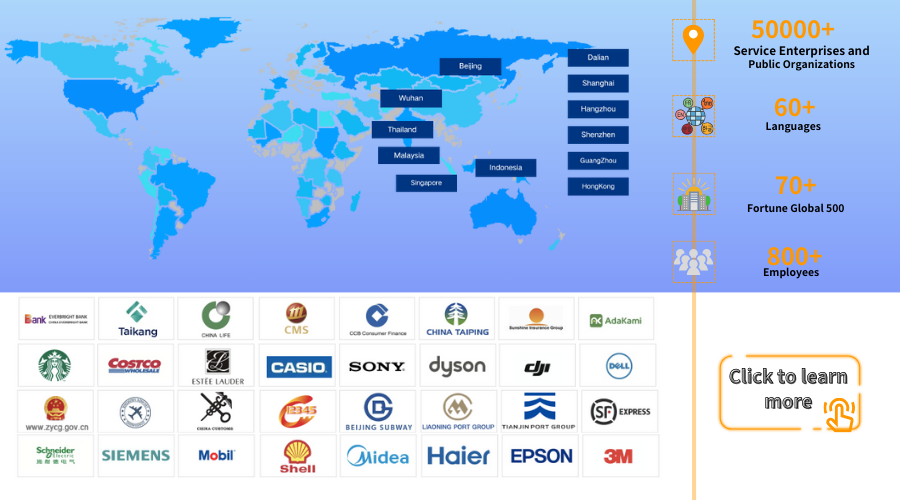Customer Effort Score (CES): A Key Metric for Measuring Customer Experience
Article Summary:Among the myriad metrics used to gauge customer service effectiveness, Customer Effort Score (CES) has gradually become a focal point for businesses due to its direct correlation with customer satisfaction and loyalty.
Table of contents for this article
- What is CES?
- Why is CES So Important
- Measuring Customer Effort: Designing and Implementing CES Surveys
- When to Use Customer Effort Score
- What Constitutes a Good Customer Effort Score
- Elevate Customer Experience with Udesk Intelligent System
- 》》Click to start your free trial of Voice of Customer, and experience the advantages firsthand.
Among the myriad metrics used to gauge customer service effectiveness, Customer Effort Score (CES) has gradually become a focal point for businesses due to its direct correlation with customer satisfaction and loyalty. This article will delve into the definition, significance, measurement methods, practical applications of CES, and how optimizing CES can drive business growth.
What is CES?
CES is a metric used to measure the amount of effort a customer has to exert to resolve an issue or complete a task with a product or service. It provides insights into how easy or difficult a customer finds interacting with a business, and is often used as a tool to assess the overall customer experience.
CES typically involves asking customers to rate the level of effort they needed to invest to accomplish a specific goal, often on a scale from 1 to 5 or 1 to 7. The scores are then averaged to gauge the ease of customer interaction with the business. The lower the CES, the better, indicating that customers find it easier to use the product or service and get their problems resolved.
Why is CES So Important

- Enhancing Customer Experience
CES plays a pivotal role in enhancing customer experience (CX) by providing actionable insights into the ease of interactions with a product or service. By measuring the effort required from customers to achieve their goals, CES helps businesses identify pain points and streamline processes to deliver a smoother customer journey.
- Predicting Customer Behavior
CES is instrumental in predicting customer behavior, as it correlates with customer satisfaction and loyalty. Research indicates that customers who experience low effort are more likely to remain loyal to a brand, repurchase products, and recommend the brand to others. By improving CES, businesses can anticipate future customer actions and tailor strategies to nurture long-term relationships.
- Driving Operational Improvements
Furthermore, CES serves as a catalyst for driving operational improvements within organizations. By analyzing CES data, companies can pinpoint areas of friction in their processes and systems, enabling them to implement targeted enhancements. Whether it involves simplifying product interfaces, optimizing support channels, or refining self-service options, CES insights guide strategic decisions aimed at reducing customer effort and improving overall satisfaction.
Measuring Customer Effort: Designing and Implementing CES Surveys
CES is an important indicator for businesses because it can directly impact customer satisfaction and loyalty. By reducing customer effort, companies can improve customer satisfaction, reduce churn rates, and potentially increase customer retention and advocacy. It is used alongside other metrics like Net Promoter Score (NPS) and Customer Satisfaction (CSAT) to provide a holistic view of the customer experience.

CES (Customer Effort Score) directly correlates with customer experience and loyalty, but may focus too much on effort level while neglecting other satisfaction factors. It is usually applicable to service industries and technical support.
NPS (Net Promoter Score) measures the likelihood of customers recommending a product or service to others, is easy to understand and implement, but does not directly reflect all aspects of the customer experience. It is suitable for measuring overall satisfaction in multi-product and service industries.
CSAT (Customer Satisfaction Score) measures customer satisfaction with specific transactions or touchpoints, is highly targeted and can measure specific transactions, but may be influenced by temporary emotions and is used to assess specific service or product features.
Each of these three metrics has its own characteristics, and using them in combination can provide businesses with a more comprehensive framework for evaluating customer experience.
When to Use Customer Effort Score
Understanding when to utilize CES surveys is crucial, as gauging how much effort customers exert to interact with your company can have a significant impact on success.
One smart approach to gather information about the customer effort score is to send them a CES survey after they have engaged with your company and ultimately made a purchase.
They have just completed an action, so the details you request are still fresh in their minds. For instance, you could set it up so that when customers reach the page confirming their transaction has been processed, a survey subtly asks them about their overall experience.
The assessment method of CES typically involves sending consumers an automated post-interaction survey, requesting them to rate specific statements within a set range based on the interaction they just completed.
What Constitutes a Good Customer Effort Score

For Customer Effort Score, there are no industry-standard benchmarks. However, depending on how you've set up your survey scale, leaning more towards one direction over the other in average effort ratings indicates where your company stands in terms of customer experience. For instance, if your scale marks 1 as low effort and 7 as high effort, then a 3 suggests consumers encountered no significant obstacles. Conversely, a six implies customers frequently encounter difficulties.
Elevate Customer Experience with Udesk Intelligent System
The Udesk Insight System is a robust customer service management platform that integrates powerful data analytics capabilities. By precisely collecting, integrating, and analyzing customer interaction data, it provides users with deep insights and decision support. Specifically, regarding CES, Udesk Insight can track and quantify the level of effort exerted by customers during the service process. This aids businesses in identifying bottlenecks and inefficient areas in their service processes, enabling them to take measures to optimize the customer experience. By reducing customer effort, enhancing satisfaction and loyalty, Udesk Insight facilitates a dual improvement in service quality and efficiency.
》》Click to start your free trial of Voice of Customer, and experience the advantages firsthand.
The article is original by Udesk, and when reprinted, the source must be indicated:https://www.udeskglobal.com/blog/customer-effort-score-ces-a-key-metric-for-measuring-customer-experience.html
AI Insight、Customer Effort Score、Insight System、

 Customer Service& Support Blog
Customer Service& Support Blog



